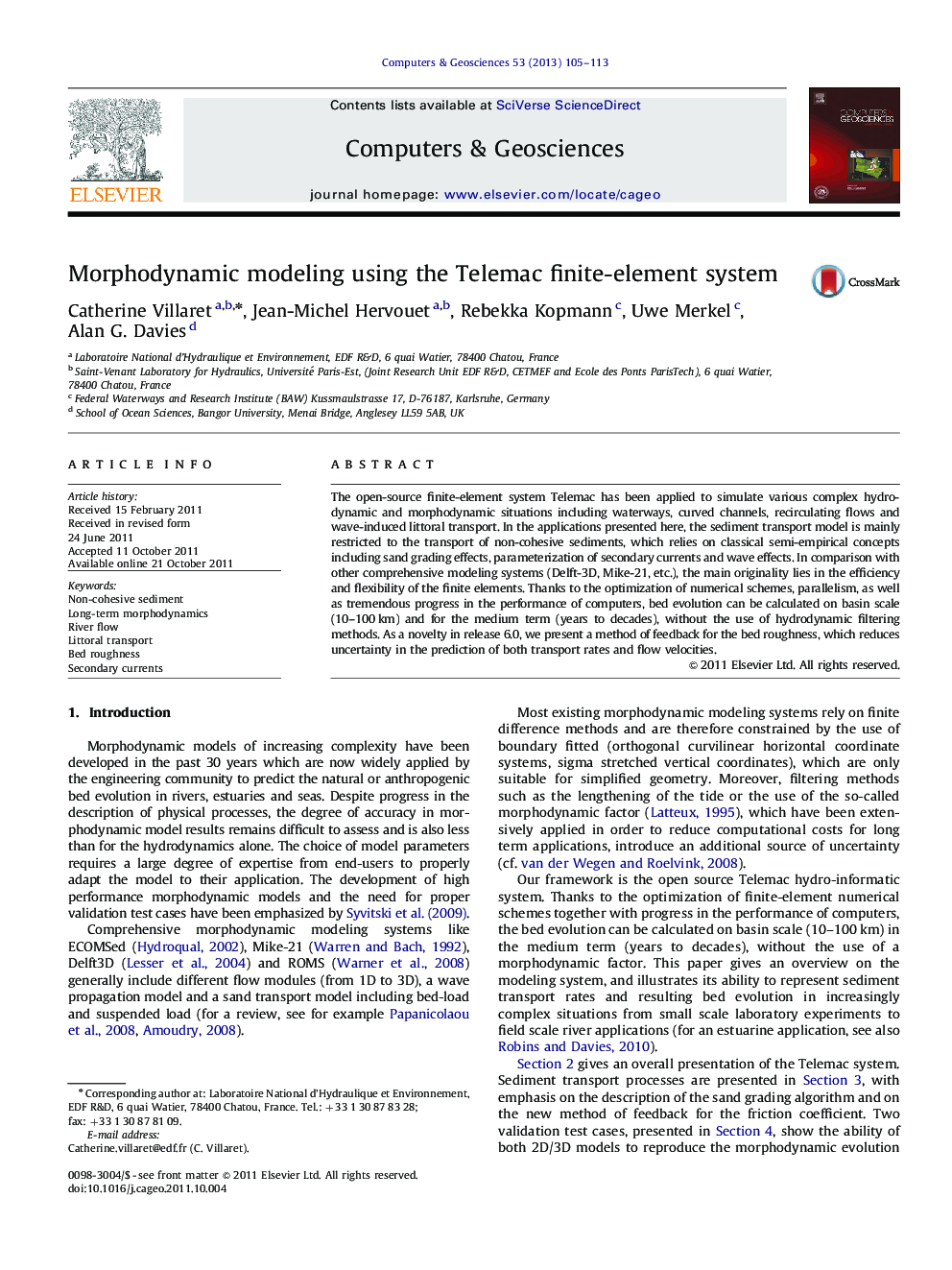| Article ID | Journal | Published Year | Pages | File Type |
|---|---|---|---|---|
| 507092 | Computers & Geosciences | 2013 | 9 Pages |
The open-source finite-element system Telemac has been applied to simulate various complex hydrodynamic and morphodynamic situations including waterways, curved channels, recirculating flows and wave-induced littoral transport. In the applications presented here, the sediment transport model is mainly restricted to the transport of non-cohesive sediments, which relies on classical semi-empirical concepts including sand grading effects, parameterization of secondary currents and wave effects. In comparison with other comprehensive modeling systems (Delft-3D, Mike-21, etc.), the main originality lies in the efficiency and flexibility of the finite elements. Thanks to the optimization of numerical schemes, parallelism, as well as tremendous progress in the performance of computers, bed evolution can be calculated on basin scale (10–100 km) and for the medium term (years to decades), without the use of hydrodynamic filtering methods. As a novelty in release 6.0, we present a method of feedback for the bed roughness, which reduces uncertainty in the prediction of both transport rates and flow velocities.
